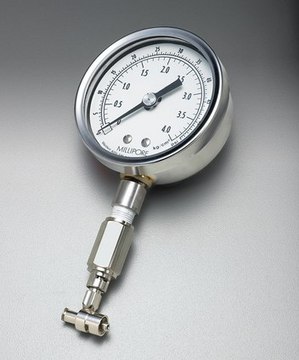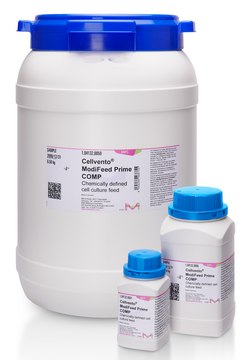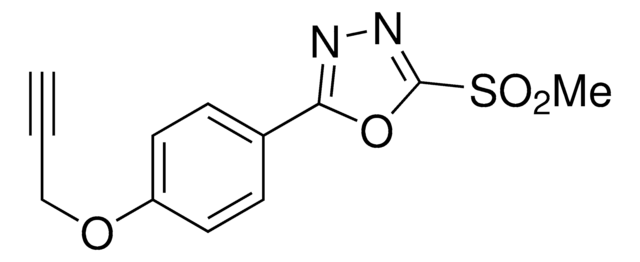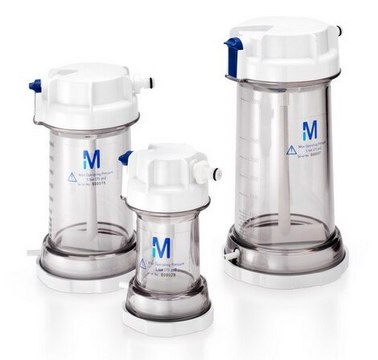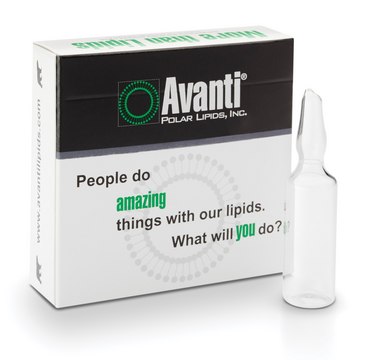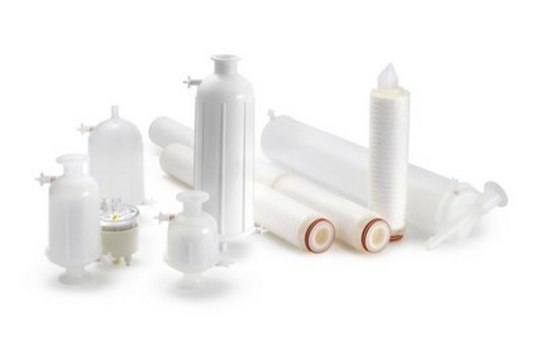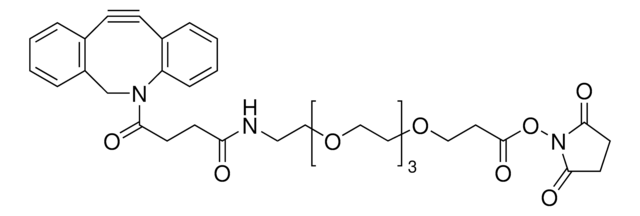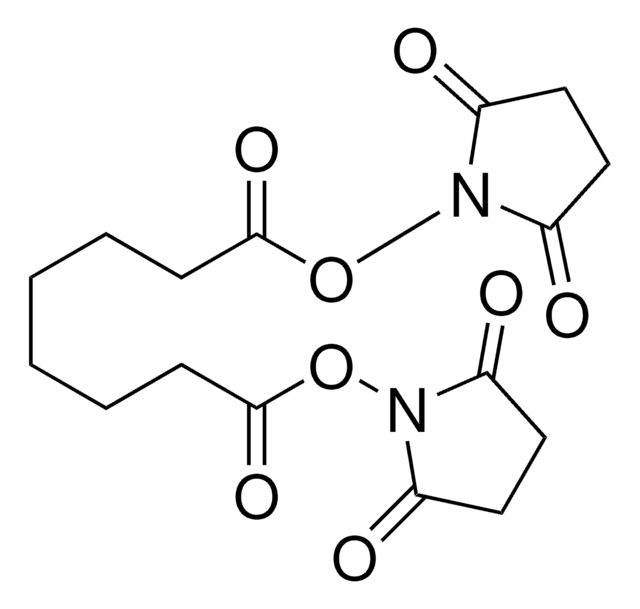All Photos(1)
Recommended Products
form
liquid
mol wt
27.4 kDa
shipped in
dry ice
storage temp.
−70°C
General description
Omniligase-1 is a peptide ligase which has very broad substrate specificity. It is a fourth-generation variant of the engineered enzyme peptiligase, which was originally developed specifically for chemo-enzymatic peptide synthesis (CEPS) applications. CEPS, the enzymatic ligation of chemically synthesized peptide segments, is applicable to the synthesis of medium-sized and long peptides (e.g. 20-100 amino acids). CEPS is useful for applications like peptide-to-protein couplings.
Omniligase-1 combines properties from different enzymes, namely the hyperstable, cation-independent subtilisin BPN′ variant Sbt149, 2 and of thiolsubtilisins such as subtiligase. Typically, omniligase-1 catalyzes the ligation between a peptide ester (acyl donor) and a peptide amine (acyl acceptor, nucleophile) segment. Omniligase-1 has six substrate recognition subsites, and has a very broad scope of substrates.
Omniligase-1 can be used to perform condensation of linear peptide segments. It also efficiently catalyzes peptide macrocyclization, as well as conjugation of peptides to proteins.
Omniligase-1 combines properties from different enzymes, namely the hyperstable, cation-independent subtilisin BPN′ variant Sbt149, 2 and of thiolsubtilisins such as subtiligase. Typically, omniligase-1 catalyzes the ligation between a peptide ester (acyl donor) and a peptide amine (acyl acceptor, nucleophile) segment. Omniligase-1 has six substrate recognition subsites, and has a very broad scope of substrates.
Omniligase-1 can be used to perform condensation of linear peptide segments. It also efficiently catalyzes peptide macrocyclization, as well as conjugation of peptides to proteins.
Application
Procedure In general, to confirm Omniligase-1 activity, it is recommend to use the Ligation Assay Solution (Catalog Number SAE0070) with the Omniligase-1 (Catalog Number SAE0068).
Substrates - Acyl Donor (Ester Fragment) Alkyl, aryl, and thioesters can be utilized. However, carboxyamidomethyl (Cam) esters or substituted Cam esters (e.g. -Cam-Leu-OH or -Cam-Leu-NH2) are recommended. The substitution of the Cam ester can be used to alter the polarity, and thus the solubility of the ester fragment. Cam esters and substituted Cam esters can be generated on resins commonly used for solid-phase peptide synthesis. Figure 3. Substituted Cam Ester Because Omniligase-1 has such broad specificity, the acyl donor (ester) fragment normally requires N-terminal protection to prevent formation of cyclic peptides or polymers. The use of a phenylacetyl protection group is recommended, as it can be removed easily with commercially available acylases.
Substrates - Nucleophile (Amine Fragment) The nucleophilic (amine) peptide fragment requires no protection at all. All amino acids except prolines in the P1′ and P2′ are accepted.
Reaction: The reaction is fast, typically taking 5-10 minutes at an Enzyme:Product ratio of ~1:100 (w/w) for a two-fragment coupling. For convenience, most coupling reactions can be performed at ambient temperature. Conversion to the desired product is usually higher than 80% (by HPLC) at a 1.1 to 1.5 molar excess of the amine fragment. The conversion generally improves with the length of the fragments. The reaction is intrinsically traceless, but can also be used with peptide linkers between other peptides, peptide fragments, or proteins.
Identification of ideal coupling positions: To identify suitable fragments for a coupling reaction, it is recommended to find a coupling position with a hydrophobic P4 residue and well-recognized amino acids in P1′ and P2′ pockets. Please note that a combination of sub-optimal amino acids can lead to a low coupling yield. In particular, prolines near the coupling site should be avoided.
General rules for obtaining a high yield: · The concentration of the amine fragment should be as high as possible. · Always check (and adjust) the pH before starting the reaction. · Reducing conditions are preferred, i.e., addition of TCEP (or optionally DTT). Oxidative conditions, or the presence of disulfides or maleimides can inhibit the enzyme.
Analysis For analysis of the coupling reaction by HPLC-MS, it is recommended to use acidic conditions (pH <3) to quench the reaction before the analysis.
Substrates - Acyl Donor (Ester Fragment) Alkyl, aryl, and thioesters can be utilized. However, carboxyamidomethyl (Cam) esters or substituted Cam esters (e.g. -Cam-Leu-OH or -Cam-Leu-NH2) are recommended. The substitution of the Cam ester can be used to alter the polarity, and thus the solubility of the ester fragment. Cam esters and substituted Cam esters can be generated on resins commonly used for solid-phase peptide synthesis. Figure 3. Substituted Cam Ester Because Omniligase-1 has such broad specificity, the acyl donor (ester) fragment normally requires N-terminal protection to prevent formation of cyclic peptides or polymers. The use of a phenylacetyl protection group is recommended, as it can be removed easily with commercially available acylases.
Substrates - Nucleophile (Amine Fragment) The nucleophilic (amine) peptide fragment requires no protection at all. All amino acids except prolines in the P1′ and P2′ are accepted.
Reaction: The reaction is fast, typically taking 5-10 minutes at an Enzyme:Product ratio of ~1:100 (w/w) for a two-fragment coupling. For convenience, most coupling reactions can be performed at ambient temperature. Conversion to the desired product is usually higher than 80% (by HPLC) at a 1.1 to 1.5 molar excess of the amine fragment. The conversion generally improves with the length of the fragments. The reaction is intrinsically traceless, but can also be used with peptide linkers between other peptides, peptide fragments, or proteins.
Identification of ideal coupling positions: To identify suitable fragments for a coupling reaction, it is recommended to find a coupling position with a hydrophobic P4 residue and well-recognized amino acids in P1′ and P2′ pockets. Please note that a combination of sub-optimal amino acids can lead to a low coupling yield. In particular, prolines near the coupling site should be avoided.
General rules for obtaining a high yield: · The concentration of the amine fragment should be as high as possible. · Always check (and adjust) the pH before starting the reaction. · Reducing conditions are preferred, i.e., addition of TCEP (or optionally DTT). Oxidative conditions, or the presence of disulfides or maleimides can inhibit the enzyme.
Analysis For analysis of the coupling reaction by HPLC-MS, it is recommended to use acidic conditions (pH <3) to quench the reaction before the analysis.
Legal Information
Omniligase is a registered trademark of EnzyPep B.V.
Omniligase is a registered trademark of EnzyPep B.V.
WGK
WGK 2
Flash Point(F)
Not applicable
Flash Point(C)
Not applicable
Regulatory Information
新产品
Certificates of Analysis (COA)
Search for Certificates of Analysis (COA) by entering the products Lot/Batch Number. Lot and Batch Numbers can be found on a product’s label following the words ‘Lot’ or ‘Batch’.
Already Own This Product?
Find documentation for the products that you have recently purchased in the Document Library.
Omniligase-1: A Powerful Tool for Peptide Head-to-Tail Cyclization
M Schmidt, A Toplak, P Quaedflieg, H Ippel, G Richelle, T M Hackeng, J van Maarseveen, T Nuijens
Advanced Synthesis & Catalysis, 359, 2050-2050 (2017)
Our team of scientists has experience in all areas of research including Life Science, Material Science, Chemical Synthesis, Chromatography, Analytical and many others.
Contact Technical Service

